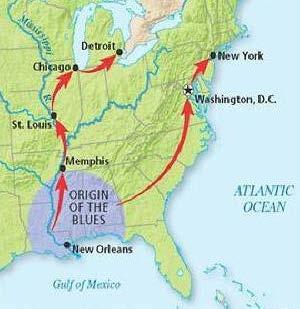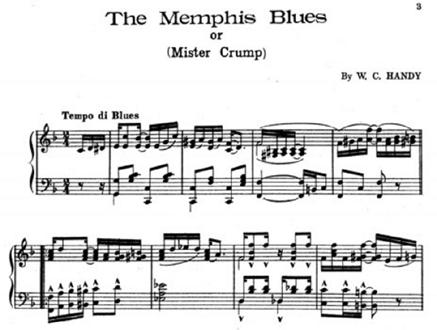
3 minute read
The Music of Memphis
JAZZ & BLUES
THE MUSIC OF MEMPHIS
Collage Dance Collective is very much influenced by the culture and music of their community in Memphis, Tennessee. Memphis is synonymous with names like W. C Handy and Riley B. King who were pioneers of Blues music.
The earliest references to blues date back to the 1890s and early 1900s. In 1912, Black bandleader W.C. Handy’s composition “Memphis Blues” was published and was an instant hit. He wrote the original melody of the song that was originally instrumental. It contained both 16-bar melodies that the audience was used to, and innovative 12-bar sections, and mixed regular two-four time with the Afro-Cuban habanera dance rhythm. As for the melody, it uses “what have since become known as ‘blue notes’,” said Handy, “the transitional flat thirds and sevenths... by which I was attempting to suggest the typical slurs of the Negro voice”.
In 1914, Handy followed up Memphis Blues with his next hit, another 12-bar blues piece with a 16-bar habanera section. The song was called St Louis Blues. It was even more popular and influential than its predecessor and it went on to become a jazz standard played by musicians such as Louis Armstrong, Count Basie and, the queen of 1920s blues, Bessie Smith.
While Handy did not invent the blues as a musical style, it had deep roots in AfricanAmerican culture. But the Memphis Blues did start the commercial blues craze. In Handy’s words, the song introduced “the blues form to the general public”, and the American public introduced it to the world. The blues went on to have a major influence on jazz, soul, rock and roll, and heavy metal.
W. C. HANDY PLAYING AT THE FIFTH ANNUAL AMERICAN NEGRO MUSIC FESTIVAL IN ST. LOUIS’S SPORTSMAN’S PARK IN 1944.
[State Historical Society of Missouri, Arthur Witman 120mm Photograph Collection (S0732), 732.31462]
That’s where the people smile, smile on you all the while. Hospitality, they were good to me. I couldn’t spend a dime, and had the grandest time. I went out a dancing with a Tennessee dear, They had a fellow there named Handy with a band you should hear And while the folks gently swayed, all the band folks played Real harmony. I never will forget the tune that Handy called the Memphis Blues. Oh yes, them Blues. They’ve got a fiddler there that always slickens his hair And folks he sure do pull some bow. And when the big Bassoon seconds to the Trombones croon. It moans just like a sinner on Revival Day, on Revival Day. Just like a mountain stream rippling on it seemed. Then it slowly died, with a gentle sigh Soft as the breeze that whines high in the summer pines. Hear me people, hear me people, hear I pray, I’m going to take a million lesson’s ‘til I learn how to play Because I seem to hear it yet, simply can’t forget That blue refrain. There’s nothing like the Handy Band that played the Memphis Blues so grand. Oh play them Blues. That melancholy strain, that ever haunting refrain Is like a sweet old sorrow song. Here comes the very part that wraps a spell around my heart. It sets me wild to hear that loving tune a gain, the Memphis Blues.

ACTIVITY
CREATE A MOVEMENT
STEP 1: Read through the lyrics of “Memphis Blues” and circle 3 to 5 words or images that you find particularly interesting.
STEP 2: For each word or image, create a movement within the ballet vocabulary that portrays that word.

STEP 3: Arrange the movements in an order you like and practice them in that order until they flow together.
STEP 4: Follow the red arrows on the map displaying the movement of blues music in the United States and make your phrase following that same patter on the floor.








